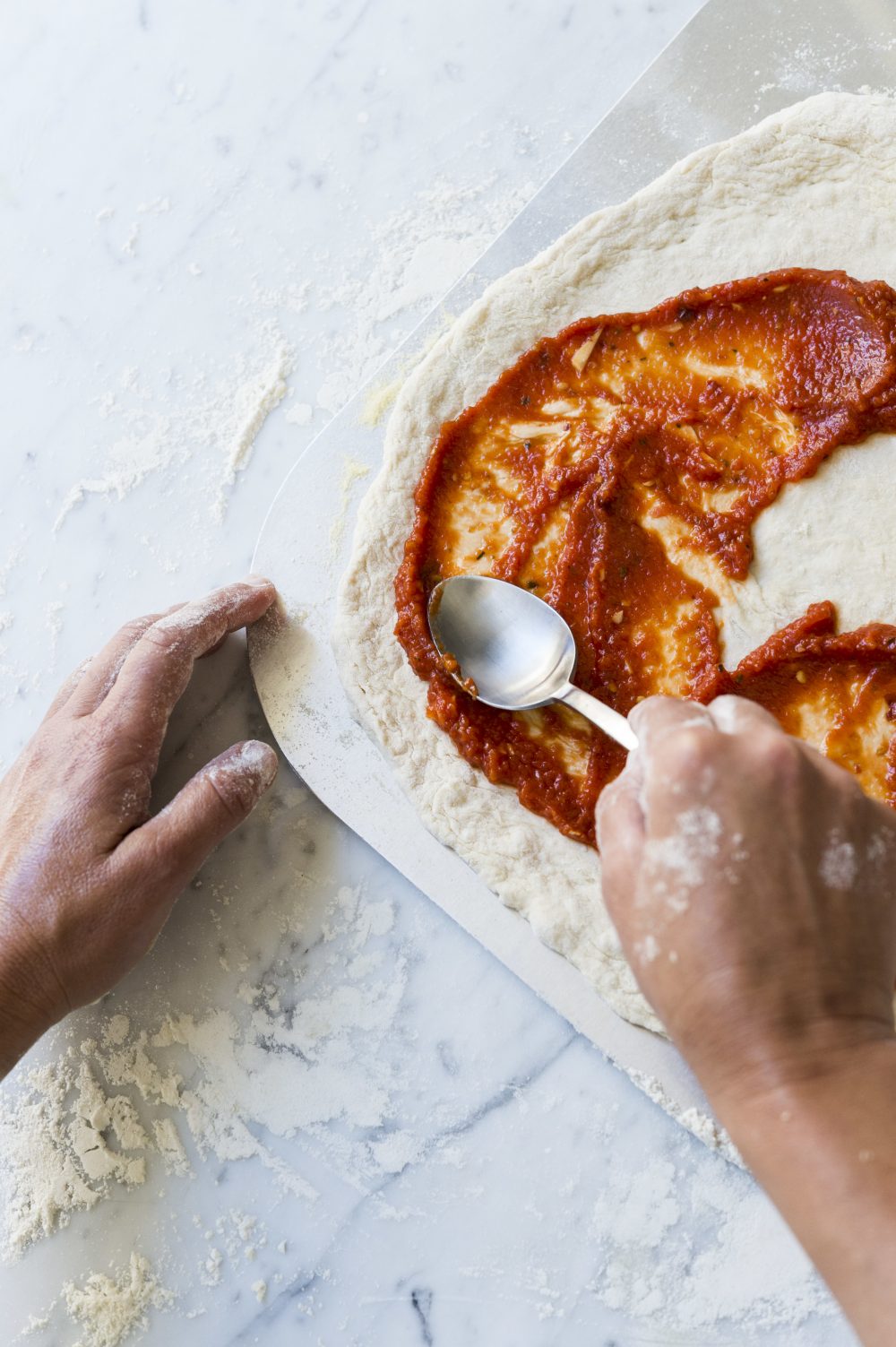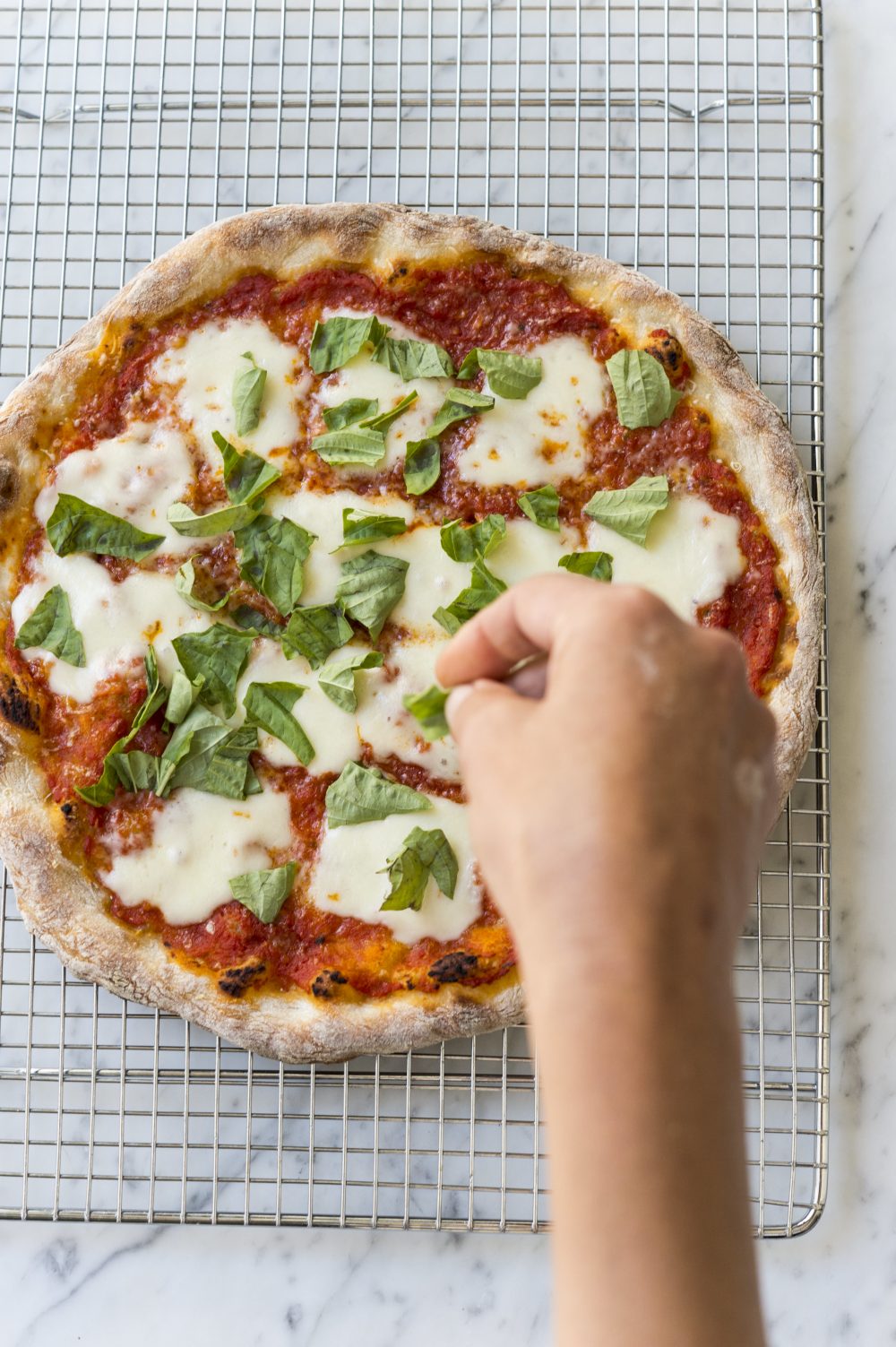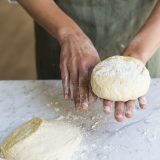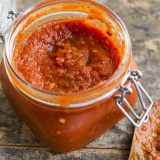This is a story about heat, and it begins on a muggy August day at my hunting cabin in Vermont. It sits atop a small mountain surrounded by 2,500 acres of forest, streams and abandoned pastures gone wild with milkweed, goldenrod and timothy grass. That day, I threw together a quick batch of pizza dough—nothing fancy—to grill later to feed an influx of in-laws.
As I shaped the dough, I noticed it was particularly elastic and easy to work with. And when the dough hit the hot grill, it bubbled like a champ. The finished pizza was chewy at the crust, crisp on the bottom and had remarkable flavor. It was the best pizza I had ever made.
Something was different. I have been making pizza for over 40 years with random, mostly unsatisfying results. A chewy crust with good flavor and a crisp bottom is hit or miss. The crust is tough. The dough is hard to handle. There is little soft chew.
And when I speak with professional bakers, I endure long speeches about fermentation and hard-to-find flours. All the while, I know that a professional bakery offers plenty of oven heat and a rich cloud of yeast spores, all of which combine to turbo-charge the dough, rendering the pros’ advice suspect, at least as it applies to the home cook.
Better bakers than I have turned their attention and experience to pizza dough, providing a host of solutions, from Jim Lahey’s no-knead dough—which takes 18 hours at room temperature—to Nancy Silverton’s use of rye flour, barley malt and wheat germ in recipes that call for a long, slow fermentation in the refrigerator for up to three days.
As we tried to recreate my hunting-cabin success, we consulted with Ken Forkish, who has written an entire book on the art of pizza and, thankfully, has focused on how to make pizza in a typical home kitchen.
Other pizza experts have tried adding whole wheat, cornmeal, semolina, molasses, ascorbic acid (to strengthen the gluten), beer, baking powder and buttermilk. And, of course, there is much discussion of hydration level—the weight of water as a percentage of the weight of the flour.
But my experience on that hot muggy day got me thinking that perhaps the secret to great pizza is less about the recipe itself and more—if not entirely—about the temperature of the dough.
My home kitchen tends to run cool—under 70°F—and I always have trouble proofing dough. I’ve been known to move bowls of dough next to the fireplace to get the yeast moving. I have even tried turning my oven into a proofing box (heat it to 200°F, then turn it off), but this method is dicey at best. I have killed off the yeast more than once.
At Milk Street, after we tried a number of recipes with unsatisfactory results, we discovered that our kitchen temperature was just 63°F. The recipe itself was pretty standard—bread flour, sugar, yeast, water, salt—and the hydration level was modest, just below 65 percent. Some experts, such as Forkish, prefer 70 percent hydration, but one needs a very hot oven and a lot of skill in stretching a dough with that much water. (When tested, higher hydration doughs do offer more bubbling and cracking, but we found that home bakers tend to reflexively add flour back to a sticky dough, which defeats the purpose.)

We also used a 24-hour cold fermentation to build flavor. As Forkish says, “Time is an ingredient.” (I find that 24-hour make-ahead dough is actually more convenient than last-minute recipes.)
The pizza was fine, but not remarkable. The big problem was the cool kitchen temperature. No matter how we adjusted, the dough never become
We tested two doughs side by side; one was at 65°F; the other 75°F. The cooler dough was almost impossible to stretch; we never made it to the full 12 inches. The warmer dough, by comparison, was easy to shape. Once baked, the cooler dough was noticeably flatter, less bubbly and slightly tougher.
But the warm dough looked like it came from an artisanal pizzeria—a big, bubbly crust and great chew. We did find that a baking steel was preferable to a baking stone. It reached 550°F (the stone only hit 525°F) and provided better oven spring. You can use a pizza stone, but baking time will have to be increased two to three minutes.
Why does this work? As the yeast cells in the dough die, they release something called glutathione. This tripeptide weakens gluten, relaxing the dough and allowing it to stretch more easily. The added resting time and warmer temperatures in our recipe provide plenty of time for this reaction to take place.
And therein lies the simple secret of great pizza dough. If the dough reaches 75°F, it has less gluten formation, it is easy to shape, the yeast is sufficiently active, and you get a nice bubbly crust with good chew and excellent oven spring. A cooler dough just never makes the grade.
We tried many toppings for this dough, but our favorite by far used a white sauce of fontina, Parmesan and heavy cream. The sauce, which has whipped cream-like consistency, was inspired by the panna (cream) pizza at Nancy Silverton's Pizzeria Mozza in Los Angeles. While she tops her white sauce with sausage, we found it also pairs well with roasted portobello mushrooms.







